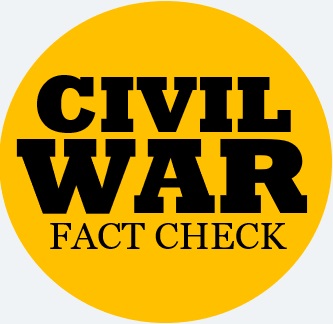

The second part of the Battle of Antietam fell on Lee’s center where a sunken county road lay hidden by a low breastwork of fence rails. It served as a ready-made rifle pit for the Rebels holding it. Lee ordered held at all costs. D.H. Hill’s Division of Longstreet Corp of just 2,500 men readied themselves for the assault five times their number. It was made up of two brigades commanded by Robert Rodes and George Anderson. 1
To inspire the men, General Robert E. Lee and Hill rode down the center lines. Colonel John B. Gordon of the 6th Alabama, of Rodes brigade, told Lee, “These men are going to stay here, General, till the sun goes down or victory is won.” 2
The Union brought up six brigades against the Rebel center, including the famous Irish Brigade. Attacking with a single brigade, individually, one at the time proved fatal for the Union strategy from the Sheets of fire coming from the Sunken Road.
The Union’s decisive break against the Rebel defenders in the Sunken Road came through a combination of Confederate communication errors and skillfully Yankee maneuvering. Some New Yorkers managed to out-flank the Confederate Right and fire down the Confederate Left. “We were shooting them like sheep in a pen,” wrote Sergeant Charles Fuller of the 61st New York.
Rhodes ordered a counterattack on the Confederate Right. Rebel Colonel James Lightfoot, Gordon’s successor after succumbing to his wounds, misunderstood Rhode’s orders to counter the threat and ordered a general retreat. Lightfoot’s orders allowed the Union to storm down overwhelm the Rebel center and take 300 prisoners. The triumphant Federals kneeled on top of a “ghastly flooring” of Rebel dead piled two and three deep and fired at the fleeing survivors.
The Rebel center had broken. One more push would have blown it apart, but supreme Union Commander George McClellan decided against it even when reverse troops were available. The Rebels inflicted great causalities on the Union but at a cost. The 4th North Carolina lost all its officers. George Anderson, who held Hills right, went down mortally wounded. Gordon was shot five times but survived and the sunken road earned the name “Bloody Lane” as the Confederate dead lay two and three deep in some places. For the Union, besides the dead, the fighting at the Lane was so intense that it caused two Union field commanders, Colonel Oliver Palmer of the 108th New York and General John C. Caldwell, to cower and flee the field of battle. 3,4,5,6
Bibliography:
1. Bailey, Ronald H., The Civil War: The Bloodiest Day, 1984 Time-Life Books Inc., pages 94-95
2. Gordon, John B., Reminiscences of The Civil War, Reprinted 1981 from the 1908 first edition Time Life Books Inc., page 85
3. Bailey, Ronald H., The Civil War: The Bloodiest Day, 1984 Time-Life Books Inc., page 97
4. Bailey, Ronald H., The Civil War: The Bloodiest Day, 1984 Time-Life Books Inc., page 100
5. Bailey, Ronald H., The Civil War: The Bloodiest Day, 1984 Time-Life Books Inc., page 101
6. Bailey, Ronald H., The Civil War: The Bloodiest Day, 1984 Time-Life Books Inc., page 103
